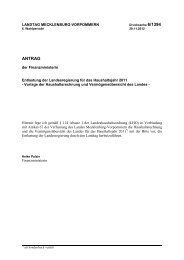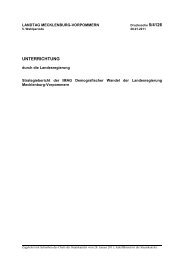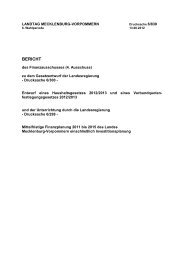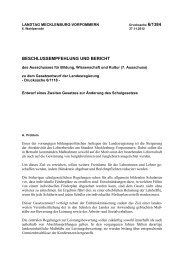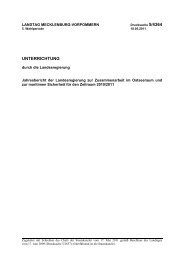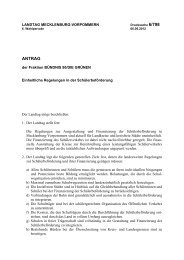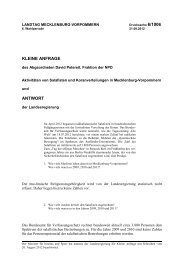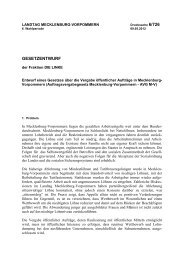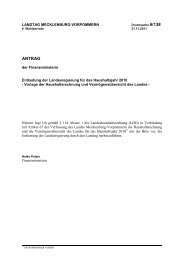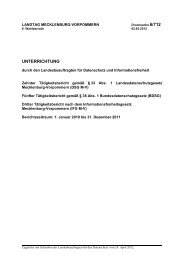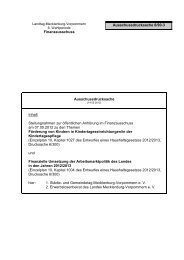Baltic Rim Economies - Baltic Port List
Baltic Rim Economies - Baltic Port List
Baltic Rim Economies - Baltic Port List
Create successful ePaper yourself
Turn your PDF publications into a flip-book with our unique Google optimized e-Paper software.
Expert article 896 <strong>Baltic</strong> <strong>Rim</strong> <strong>Economies</strong>, 21.12.2011 Quarterly Review 5�2011<br />
Strong recovery in maritime transport volumes stalled with economic<br />
uncertainty<br />
By Elisa Holma<br />
The year 2010 was time for growth and strong recovery in<br />
cargo volumes in the <strong>Baltic</strong> Sea ports. Also this year started<br />
with favourable economic development in all of the nine <strong>Baltic</strong><br />
Sea countries. Foreign trade increased especially during the<br />
first half, but towards the end of the year, development has<br />
been slowing down and even stalled. However, in many ports,<br />
total cargo volumes are expected to reach higher levels than in<br />
2010. The expectations for growth in 2012 are rather modest<br />
and cautious, being overshadowed by the prospect of a new<br />
economic recession.<br />
Recovering cargo volumes in the <strong>Baltic</strong> Sea ports in 2010<br />
In 2010, <strong>Baltic</strong> Sea ports handled a total of 809 million tons of<br />
cargo (+9% y-o-y), after a dramatic drop of 10% in 2009.<br />
Cargo volumes increased in all <strong>Baltic</strong> Sea countries except for<br />
Denmark (<strong>Baltic</strong> Sea coast) and Latvia, where diminished<br />
transports of fossil fuels kept the cargo volumes at a slightly<br />
lower level than in 2009. The annual growth was strongest in<br />
Poland (+32% to 60 million tonnes), and in Estonia (+20% to<br />
46 million tonnes). In both Poland and Estonia, strong growth<br />
was seen in all cargo types. In general, international imports,<br />
which faced the biggest falls in volumes in 2009, increased<br />
more than exports in the <strong>Baltic</strong> Sea ports (+14% and +6%<br />
respectively). Measured in total cargo volumes, Sweden<br />
regained its leading position in the <strong>Baltic</strong> Sea, with a share of<br />
more than a fifth. Sweden was closely followed by Russia,<br />
where volumes are largely composed of oil exports.<br />
The volumes of all cargo types in international traffic<br />
increased in 2010. Strongest growth was seen in non-bulk<br />
cargoes (+17%), which had seen the deepest fall the year<br />
before. This class includes for example containers, where the<br />
volumes increased the most (+27%). Liquid bulk remained<br />
clearly the largest type of cargo handled in the <strong>Baltic</strong> Sea<br />
ports, with a total volume of 305 million tonnes (+1%). Dry bulk<br />
cargoes in international traffic were handled 190 million tonnes<br />
(+12% y-o-y).<br />
Despite the strong growth, total volumes were still 2% (-17<br />
mln tonnes) behind the peak volumes of the year 2007, nonbulk<br />
cargoes lagging the furthest behind peak volumes. In<br />
2010, other than bulk cargoes were handled 8% less than in<br />
2007, and dry bulk 4% less. Instead, liquid bulk cargoes<br />
reached the peak volumes in 2010.<br />
Primorsk, St. Petersburg and Gothenburg remained the<br />
three biggest ports in the <strong>Baltic</strong> Sea in 2010. Most of the ten<br />
biggest ports were located in the eastern part of the <strong>Baltic</strong> Sea,<br />
four of these being located in the Gulf of Finland.<br />
Fig. 1. Cargo handled in the <strong>Baltic</strong> Sea ports by country and<br />
annual growth rate (%) in 2010. Source: <strong>Baltic</strong> <strong>Port</strong> <strong>List</strong><br />
2011.<br />
52<br />
Slowing growth and uncertainty this year<br />
Year 2011 started with favourable economic development in all<br />
of the <strong>Baltic</strong> Sea countries. Especially the first half of the year<br />
seemed encouraging, but towards the end of the year the<br />
expectations for growth have weakened and common<br />
economic uncertainty has increased.<br />
The <strong>Baltic</strong> Sea region countries still have not recovered<br />
completely from the previous recession caused by the global<br />
financial crisis. Each country around the <strong>Baltic</strong> Sea has<br />
proceeded somewhat at its own pace when it comes to<br />
economic growth. During the autumn, general uncertainty in<br />
the global and European economies started again to weaken<br />
significantly both companies’ and consumers’ trust towards<br />
economic growth. In September, IMF forecasted GDP growth<br />
for the nine <strong>Baltic</strong> Sea countries together to be 3.3% this year<br />
and 2.3% next year, but predictions of a new recession have<br />
already been heard.<br />
The amount of maritime cargo traffic in the <strong>Baltic</strong> Sea kept<br />
rising during the first half of the year. Total volumes handled by<br />
the 20 biggest ports increased appr. 7.5% in January-June<br />
2011, year-on-year. As a result of a strong beginning of the<br />
year, most ports are expecting higher volumes to be handled<br />
this year than in 2010.<br />
Modest growth expectations for the year 2012<br />
According to the <strong>Baltic</strong> <strong>Port</strong> Barometer survey, carried out in<br />
August-September, the ports have cautious, yet optimistic,<br />
expectations for the year 2012. Modest growth is expected in<br />
cargo volumes in 2012, but at the same time the expectations<br />
are overshadowed by the prospect of a new economic<br />
recession. The brightest outlook is seen among the ports<br />
located in the eastern part of the <strong>Baltic</strong> Sea.<br />
However, expectations for the year 2012 have clearly<br />
come down compared to predictions given in 2010 for the year<br />
2011. <strong>Baltic</strong> <strong>Port</strong> Index (BPI), which gives an overview of the<br />
ports’ expectations for the year to come, has halved from last<br />
year. BPI is now at 21 (last year at 50), meaning that the ports’<br />
expectations have weakened, but they still remain positive.<br />
The volumes of all cargo types are expected to increase in<br />
the <strong>Baltic</strong> Sea, but expectations for bulk cargoes are more<br />
modest compared to non-bulk cargoes. Within non-bulk cargo,<br />
growth is expected especially in containers.<br />
The article is based on an annual market data package,<br />
published by the Centre for Maritime Studies at the University<br />
of Turku. The package includes three publications: <strong>Baltic</strong> <strong>Port</strong><br />
<strong>List</strong>, <strong>Baltic</strong> <strong>Port</strong> Insight and <strong>Baltic</strong> <strong>Port</strong> Barometer. Of these<br />
three, <strong>Baltic</strong> <strong>Port</strong> <strong>List</strong> 2011 includes detailed port statistics on<br />
2010 and time series since 2006, <strong>Baltic</strong> <strong>Port</strong> Insight gives an<br />
overview of the current year in the <strong>Baltic</strong> Sea countries and<br />
ports, and <strong>Baltic</strong> <strong>Port</strong> Barometer provides information on <strong>Baltic</strong><br />
Sea port development trends by assessing the business and<br />
traffic prospects across the BSR over short-term, year-on-year.<br />
Elisa Holma<br />
Researcher<br />
Centre for Maritime Studies<br />
at the University of Turku<br />
Finland<br />
� Pan-European Institute � To receive a free copy please register at www.tse.fi/pei �



